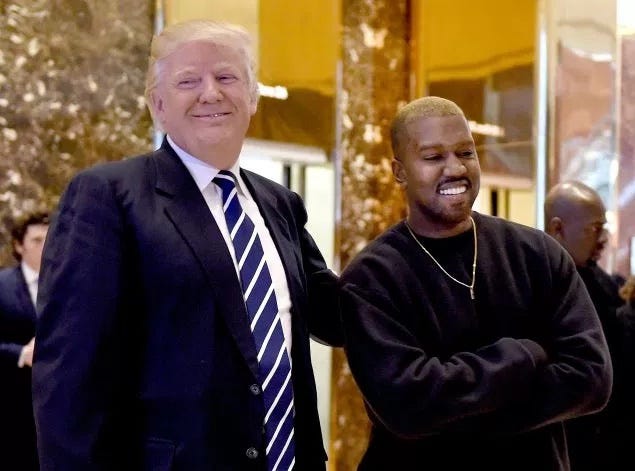Medium
2017-01-08
 Kanye West meets with Donald Trump at Trump Tower, December 2016. Credit: Observer.com at http://observer.com/2016/12/is-kanye-west-the-future-voice-of-trump-radio/ |
2013 essay revisited
The analogy put forward by McIntosh (1997) has a number of advantages. It is frequently assumed in social terms that whiteness is immutable. However, the experience of the white Irish in early twentieth-century USA suggests that ‘whiteness’ holds connotations beyond skin colour alone (Guteri, 2009). Similarly, the ‘one drop’ rule that was used to define African Americans in rules regarding segregation in the early Twentieth Century suggested that any individual with one African-American ancestor should be considered as non-white (Khanna, 2011). However, difficulties occur in this analogy when white privilege intersects with other forms (Smith, 2007). White privileges can combine with other foundations with the effect of a different set of advantages and disadvantages; be they represented through as social, economic, gender or sexuality. ‘The cumulative effect of these unseen privileges for whites sustains the current racial group disparity’ (Mallett & Swim, p.58). The questions posed by McIntosh’s (1997) analogy focus on whether we can consider the interactions between all prejudice in solely terms of maintaining white privileges, or whether other factors arise. Are the privileges gained by being ‘white’ and ‘male’ simply the cumulative effect of the assets of either category, or does being a non-white male involve a qualitatively different type of maleness? To examine these issues the following structure will be adopted. First, a discussion will be made of McIntosh’s (1997) analogy in understanding whiteness. The suggestions of McIntosh (1997) and Ignatiev (1997) for active resistance to whiteness will be scrutinised. Second, the contribution of Critical Race Theory (CRT) will be assessed. Third, the intersection of race with other factors, including definitions of race, poverty, and gender will be discussed. In the ensuing discussion, the following disclaimer is made: race and racial terms are understood as social constructs rather than biological facts, and the terms will be used purely as they are understood contextually. This must also be recognised of the term African-American which is used in the ensuing discussion…
Read the entire article here.



